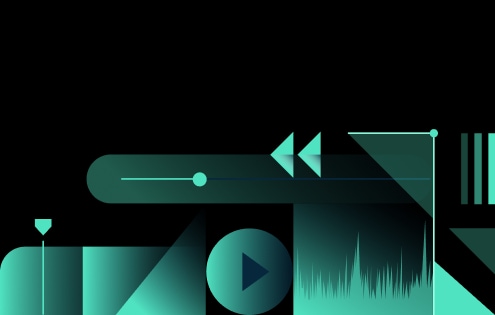In this article
Understanding Medium Shot
Have you noticed that some of the most memorable scenes from movies often show the character from the waist up? Take the most iconic scene from The Godfather: Part 1, when Michael Corleone is sitting in a restaurant with the gangsters who ordered a hit on his father, preparing to go to the bathroom to find the hidden gun. We see the character's internal struggle in their face, but we also notice a sense of unease in their body language.
This type of shot is a medium shot, and in essence, it lets us get acquainted with the character on the screen.

The medium shot is a specific camera framing technique in which we see most of the character's body, except their legs and feet. This allows creators to create a delicate balance between detail and context. The audience can clearly see the subject's facial expressions, but they can also focus on upper body gestures, while still seeing enough background elements to have excellent spatial awareness.
This type of framing technique is very common in dialogue scenes and character-driven moments in the story.
What are the Visual Characteristics of Medium Shots?
Medium Shot vs. Cowboy Shot
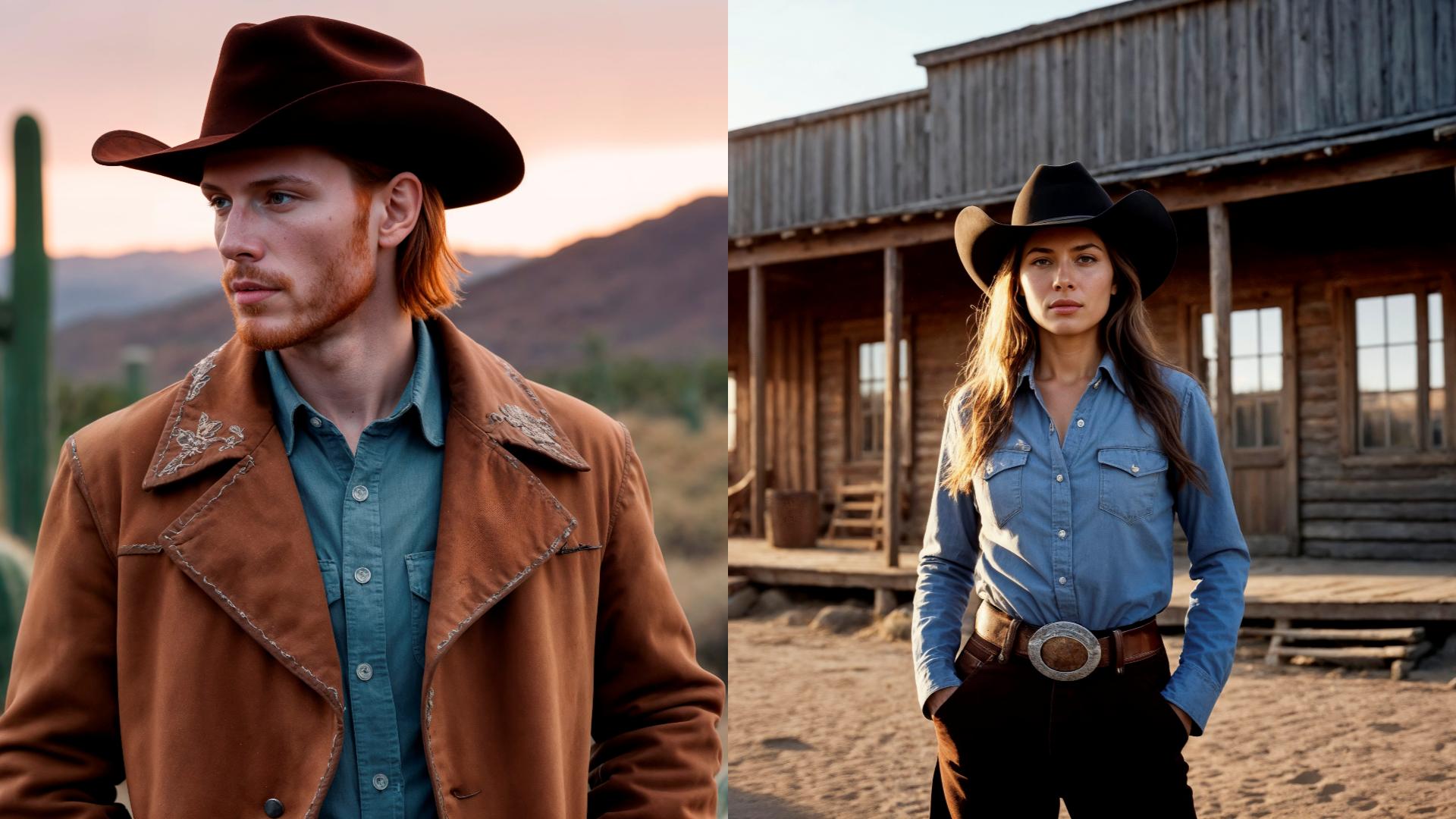
A cowboy shot is a specific form of medium shot that breaks the principle of framing the character from the waist up by positioning the camera slightly lower and framing the character from their thighs up. This was done in Western so that we can see whether the character was armed. This is the basic difference, but there is much more to explore, so take a look at this table.
| Comparisons | Medium Shot | Cowboy Shot |
| Framing Range | From the waist up; | From the mid-thigh to the head; |
| Focus | You get a balanced view of facial expressions and body language. | The shot emphasizes both facial expression and the lower body (often for holstered weapons or a stance). |
| Common Uses | Dialogue scenes, character interactions, emotional beats, etc. | Westerns, confrontations, standoffs, showcasing physical readiness, etc. |
| Emotional Impact | It creates intimacy while preserving spatial context. | It adds tension and drama, often conveying strength or readiness. |
| Background Visibility | Moderate; we can see some of the surrounding environment. | Less moderate; we can see slightly more background due to the wider frame. |
| Visual Style | Neutral and versatile; | Stylised and dynamic, often dramatic; |
| Historical Association | Used across all genres; | Popularized in Western films (e.g., The Good, the Bad and the Ugly); |
5 Medium Shot Movie Scene Examples
Now that we understand some theory behind the medium shot, let's take a look at some of the most memorable medium shot examples in cinema history.
Pulp Fiction (1994) – The Bonnie Situation
This is one of the most hilarious conversations in all of cinema. If you have never seen Pulp Fiction, we won't spoil what happens before we get to this scene, but let's just say that it's a rollercoaster of events. Notice how Tarantino uses the medium shot when framing characters in this conversation to pick up subtle body language cues. It's so awkward.
The Social Network (2010) – The Breakup Scene
Notice the difference between the medium shot with the characters standing and sitting. In this example, we can see how the medium shot conveys a dramatic conversation in which two people discuss their relationship and break up at the end.
Kill Bill: Vol. 1 (2003) – The Bride vs. Vernita Green
Here we have another Quentin Tarantino masterpiece. He really is the master of medium shots. He used them very often in the first Kill Bill movie, but this is a particular case. Here, the medium shot is used in a choreographed action sequence, and the goal was to frame this fight like a conversation between two old girlfriends. He did a masterful job.
Inception (2010) – Cobb Explains the Dream World
So, the medium shot can very effectively be used in a comedy, drama, and action scene. What about science fiction? Inception is not entirely a sci-fi movie, but it does have enough elements. Here, we have an explanation scene that offers important details about the story. Christopher Nolan uses the medium shot so that the audience can focus on the narrative.
Black Swan (2010) – Nina in Front of the Mirror
Finally, in this Darren Aronofsky masterpiece, the director uses the medium shot whenever the main character, Nina, is experiencing mental deterioration. The medium shot shows how the character is slowly descending into madness, hallucinating, and seeing things that are not there. This shows that the medium shot can be very effective in horror and thrillers.
When and Where to Use Medium Shots
In this section, we will cover the genres where the medium shot is most commonly used, some creative filmmaking techniques that complement the medium shot, and a few important pro tips to consider.
Genre-Specific Applications for Medium Shots
Combine Medium Shots with Other Creative Techniques
Two Important Artistic Considerations for Medium Shots
Easy Guide to Transform Full-Body Shots to Medium Shots
Imagine that you recorded a full-body shot, but later, in post-production, you realize that the scene calls for a medium shot. Instead of having to reshoot everything all over again, you can use a tool like Filmora that offers some of the most intuitive and powerful advanced editing features that will help you convert that shot into a medium shot in less than a minute.
A Step-by-Step Guide to Creating the Perfect Medium Shot
Download and install Filmora on your device. Then, open Filmora and create a new project. Then, click on the import button and upload the full-body shot from your hard drive. When this is done, follow the easy three-step guide below to convert a full-body shot into a medium shot to serve your story.
Drag the file to Filmora's video editing timeline.
Right-click on the clip in the timeline and select the Crop and Zoom feature.
Resize the frame to highlight the character from the waist up, and then, when you are done, click on Apply.
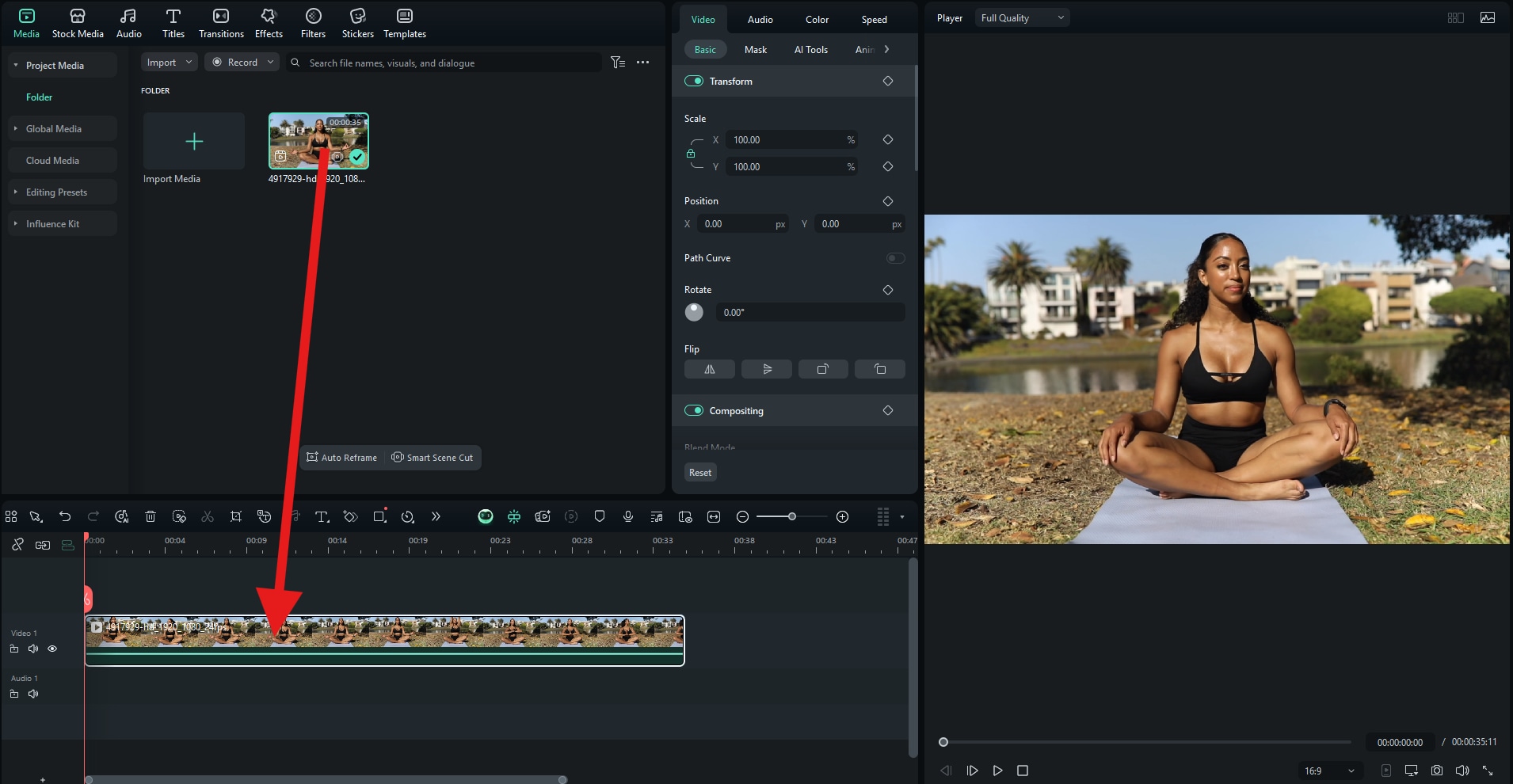
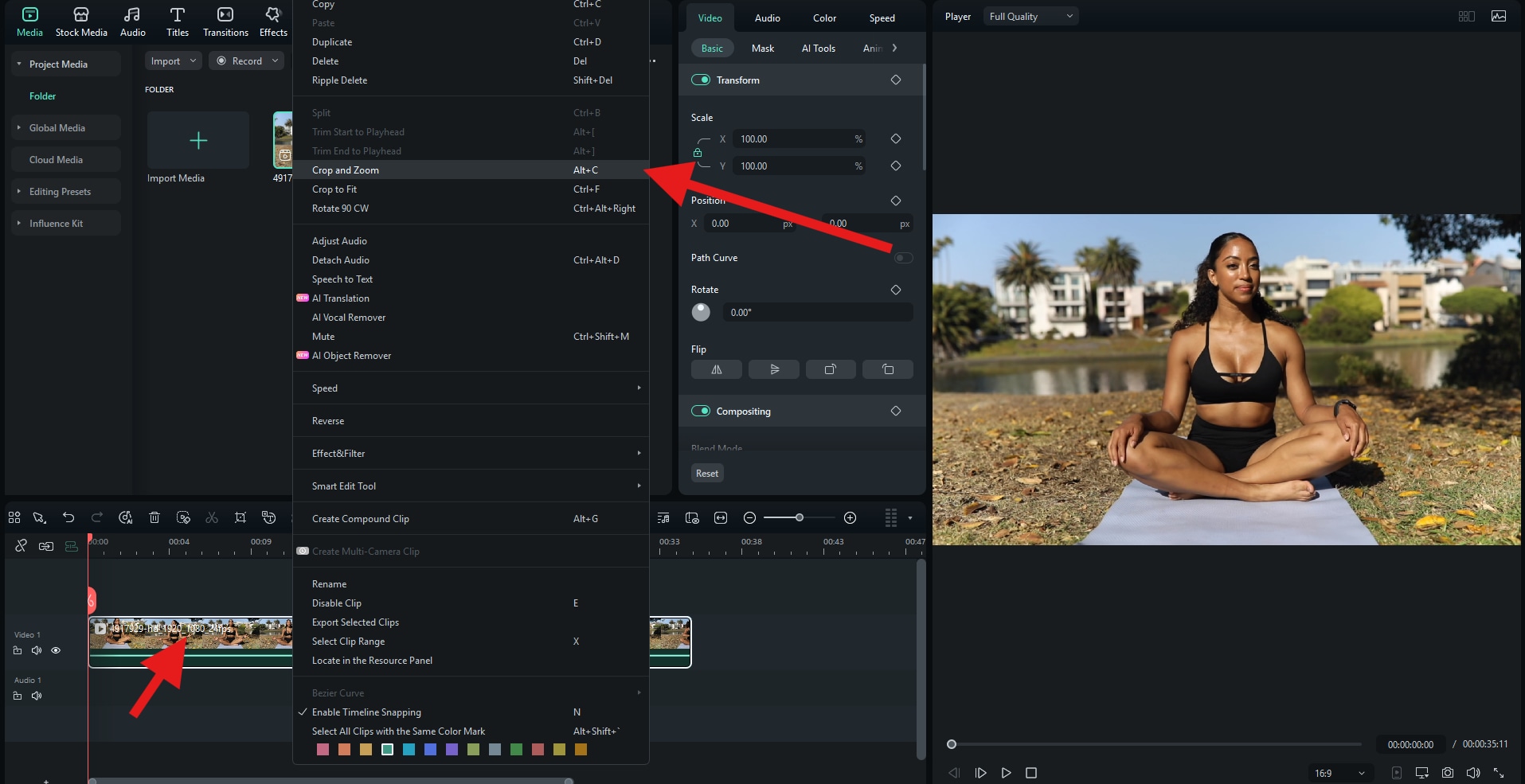
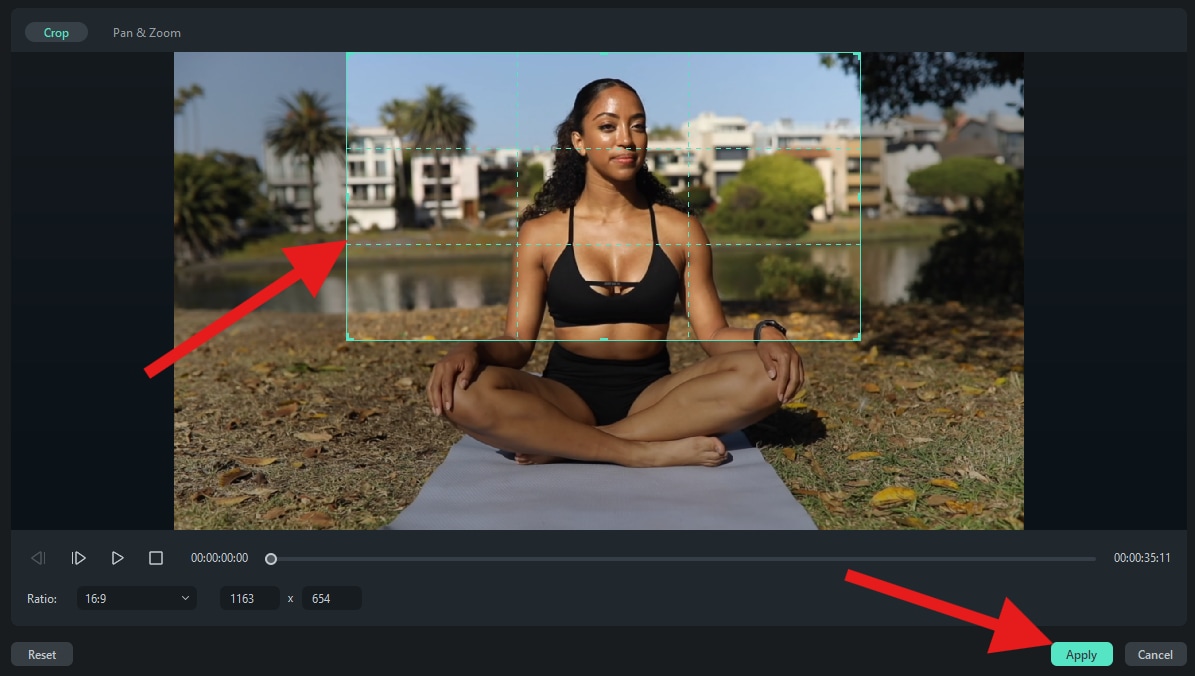
Take a look at this comparison GIF. On the left, you will see part of the original video to see how the character was originally framed, and on the right is the new medium shot we created in three simple steps using Filmora.

Fixing The 2 Most Common Issues with Medium Shots
In your medium shot, you cannot focus on the subject because the background is too busy, distracting focus from the main action in the scene.
Always pick a calm background for medium shots. The subject needs to be in focus, and the background should only provide vague details about the location. Before you begin recording, test the scene to ensure that everything is in order.
The scene with a medium shot has poor lighting, and the background loses focus with faraway objects, creating an illusion of shallow space.
Lighting is one of the most important aspects of medium shots. The character needs to be lit perfectly, and the camera focus should be set up to capture enough background details. Try to test it before you start recording.


